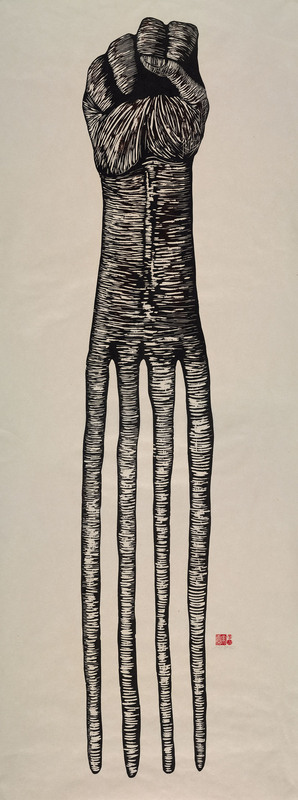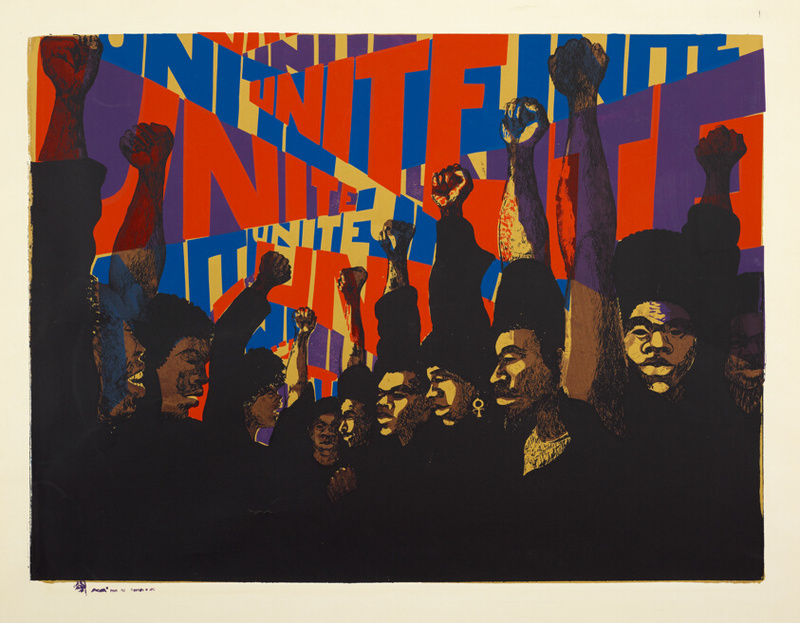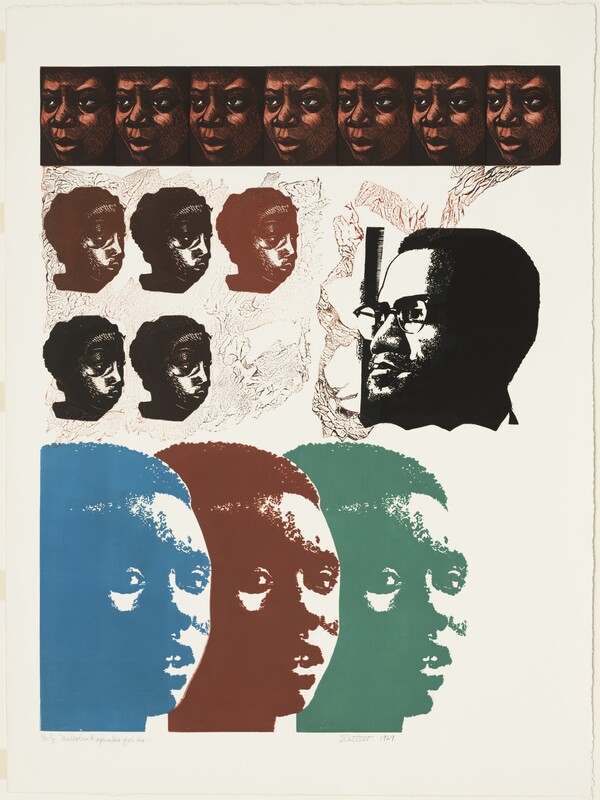Omma Do This
“You can’t separate peace from freedom because no one can be at peace unless he has his freedom.” - Malcolm X
There is a long history of protest within the black community. With it in the Civil Rights Movement, the Black Panther Movement, and the Black Lives Matter movement in recent times. Fighting for freedom and equal treatment is something that all black people can relate to on many levels. The works we will be looking at in this section are all mostly from the Black Arts Movement which was active from the 1960s to the 1970s. This movement really focused on sharing a message of black pride and many of the works from this time as associated with protest. This movement really focused on black creativity and accomplishments, and generally just having the voice of black people be heard.
With the Civil Rights Movement taking place from 1954 - 1968, and the Black Panther Party being founded in 1966, and the Black Lives Matter movement starting in 2013 you can see that the idea of activism isn’t a new subject for black people. Activism is always needed, but this Black Arts Movement is more focused on black issues relating to music, visual arts, literature, and so on. The Civil Rights Movement leads us up to the Black Arts Movement, Black people looking for equal rights and freedom leads to an outburst of a lot of cultural creativity. The Black Arts Movement also feels like something that really helped to define Black culture. We have talked about in previous section how African Americans struggled to find their identity after slavery and the Jim Crow era but this movement is really booming with the creation of culture for African Americans.
Protest comes in many different forms, but the black arts movement is a big contributor to the different forms of protest. As stated by Larry Neal, the black art movement comes from the need for a self identity and the want for unity (p. 29). Unity and fighting as a collective is a theme you will see throughout this section. Coming together as a unit and fighting for each other is the black experience, rarely will you see a depiction of a black person fighting for just themselves.
Unite (AfriCOBRA) 1971 C.E. created by Barbara Jones-Hogu (1938 - 2017), very blatantly shows us that theme of unity, standing side by side making the collective voice louder. This work was made towards the end of the Black Arts Movement and acts as one of many very iconic pieces from the movement. The work really showcases that idea of black pride by showing us black people in their natural hair coming together. Art like Unite (AfriCOBRA) are so important because they establish the idea of unity. Art in the Black Arts Movement promoting unity was so important because it ensured to all black people that their personal identities were valued and to take pride in them, it created the idea that we are all coming together for a common good. Malcolm X Speaks for Us 1969 C.E. created by Elizabeth Catlett (1915 - 2012), explores the idea of looking towards a figure to lead a group. This work by Elizabeth really showcases the topics she addressed the most, which were women and black people. Malcolm X Speaks for Us is very clearly influenced by the time period it was created, right in the middle of the Black Arts Movement and soon after Malcom X died, it shows us Elizabeth's want for self-determination within the black community and the alignment with a leader like Malcolm X.
We see these forms of protest not only from art and physical marches but also in music. In Marvin Gladneys journal, The Black Arts Movement and Hip-Hop, he discusses how hip-hop is an extension of what the black arts movement was doing (p. 291). Hip-hop is going to discuss black struggles and trauma much like more traditional senses of art will. We see this form of protest also with rap, a more modern example for you to put in your head can come from the Childish Gambino This is America music video. The song as a whole discusses the topic of police brutality, a big focus of the current black lives matter movement today, and how it affects black people. The music video itself gives us a very raw and real depiction of the amount of violence against black people that still exist today. Violence that exists on the streets and even in churches. While clearly this music video isn’t from the Black Arts Movements era, it still is talking about a topic that was relevant even back then, police brutality. This goes to show you the influence the movement had on even the future creation of black art.
You can find the music video to the side here, there are captions included in the Youtube video. Watch the video while keeping in mind how Hip-Hop and the Black arts movement are related and see how the arts movement has influenced the cinematography of the video as well as the lyrics.
An important takeaway from this section is rage and anger. The idea of being tired of having to continuously fight for fights and wanting systematic changes.


